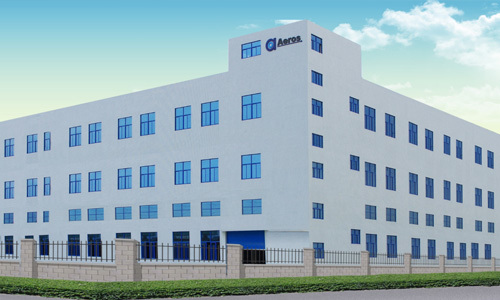Understanding the Chocolate Aeration System: Enhancing Wastewater Treatment Efficiency

2024/12/10
In the realm of wastewater treatment, aeration is an essential process that facilitates the breakdown of organic material. One innovative approach within this sphere is the Chocolate Aeration System. This system is designed to enhance the efficiency of aerobic treatment processes, ultimately leading to improved water quality and reduced environmental impact.
The Chocolate Aeration System operates on the principle of increasing the surface area of aeration elements, much like the texture and consistency of chocolate. This unique design allows for an optimized interaction between air and wastewater, significantly enhancing the oxygen transfer rate. The increased oxygen availability accelerates the growth of beneficial microorganisms, which are crucial for breaking down pollutants in the wastewater.
One of the key advantages of incorporating a Chocolate Aeration System into wastewater treatment is its ability to maintain consistent aeration levels. Unlike traditional aeration methods, which may experience fluctuations in performance due to varying flow rates and operational conditions, the Chocolate Aeration System provides a stable and reliable aeration environment. This stability is vital for maintaining the health of the microbial population responsible for degradation processes.
Additionally, the Chocolate Aeration System is designed with energy efficiency in mind. By optimizing the aeration process, it reduces the overall energy consumption associated with pumping and aerating the wastewater. This not only leads to cost savings for facilities but also aligns with global efforts to promote sustainability and reduce carbon footprints.
Furthermore, the system is adaptable to various types of wastewater treatment processes, making it suitable for a wide range of applications, from municipal wastewater treatment plants to industrial facilities. Its versatility allows engineers and operators to tailor it to their specific needs, ensuring maximum effectiveness.
Maintenance is another crucial aspect when considering the implementation of a Chocolate Aeration System. Regular monitoring and care will ensure that the system continues to operate at peak performance. By adhering to a well-structured maintenance schedule, facilities can avoid costly downtimes and extend the lifespan of their aeration equipment.
In conclusion, the Chocolate Aeration System represents a significant advancement in wastewater treatment technology. Its ability to enhance oxygen transfer, improve stability, and promote energy efficiency makes it a valuable asset for any facility seeking to optimize its wastewater management processes. Understanding and implementing this system can lead to more effective treatment outcomes and contribute to the overall goals of environmental preservation and public health.
The Chocolate Aeration System operates on the principle of increasing the surface area of aeration elements, much like the texture and consistency of chocolate. This unique design allows for an optimized interaction between air and wastewater, significantly enhancing the oxygen transfer rate. The increased oxygen availability accelerates the growth of beneficial microorganisms, which are crucial for breaking down pollutants in the wastewater.
One of the key advantages of incorporating a Chocolate Aeration System into wastewater treatment is its ability to maintain consistent aeration levels. Unlike traditional aeration methods, which may experience fluctuations in performance due to varying flow rates and operational conditions, the Chocolate Aeration System provides a stable and reliable aeration environment. This stability is vital for maintaining the health of the microbial population responsible for degradation processes.
Additionally, the Chocolate Aeration System is designed with energy efficiency in mind. By optimizing the aeration process, it reduces the overall energy consumption associated with pumping and aerating the wastewater. This not only leads to cost savings for facilities but also aligns with global efforts to promote sustainability and reduce carbon footprints.
Furthermore, the system is adaptable to various types of wastewater treatment processes, making it suitable for a wide range of applications, from municipal wastewater treatment plants to industrial facilities. Its versatility allows engineers and operators to tailor it to their specific needs, ensuring maximum effectiveness.
Maintenance is another crucial aspect when considering the implementation of a Chocolate Aeration System. Regular monitoring and care will ensure that the system continues to operate at peak performance. By adhering to a well-structured maintenance schedule, facilities can avoid costly downtimes and extend the lifespan of their aeration equipment.
In conclusion, the Chocolate Aeration System represents a significant advancement in wastewater treatment technology. Its ability to enhance oxygen transfer, improve stability, and promote energy efficiency makes it a valuable asset for any facility seeking to optimize its wastewater management processes. Understanding and implementing this system can lead to more effective treatment outcomes and contribute to the overall goals of environmental preservation and public health.
Chocolate aeration system









